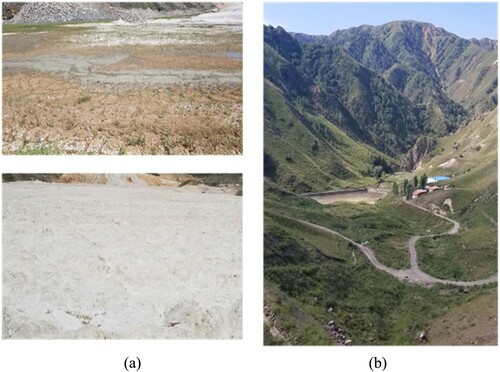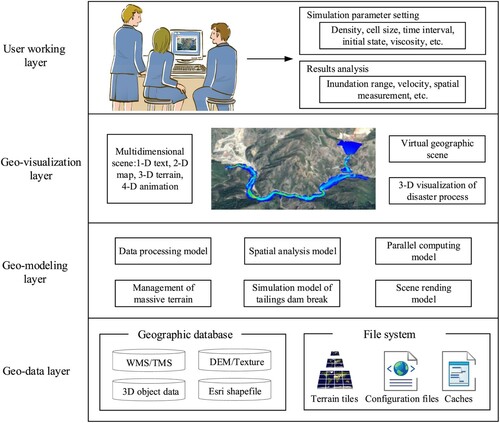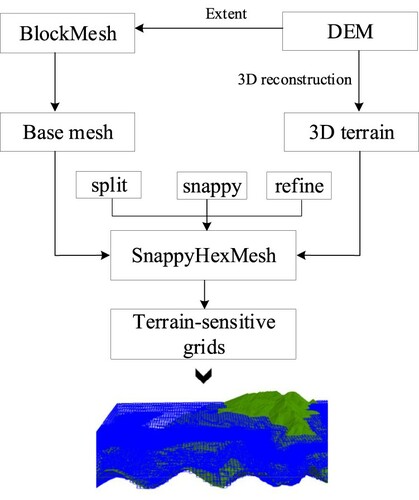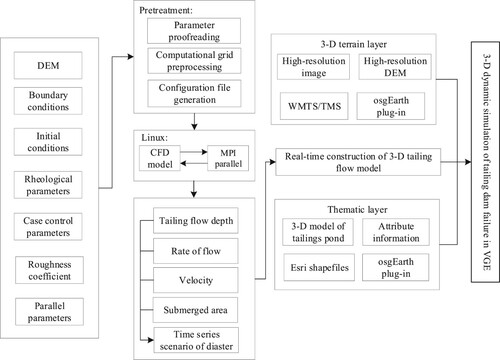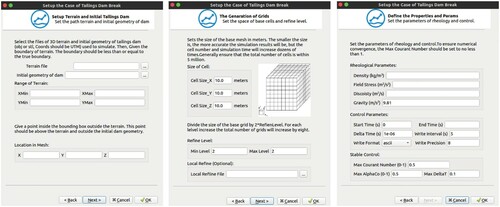Figures & data
Figure 7. Mesh clipping and different rendering forms of simulation results: (a) diagram of mesh clipping; (b) simulation result rendered in surface form; and (c) simulation result rendered in wireframe form.

Figure 8. The main interface and some features of the prototype VGE: (a) main interface; (b) spatial annotation and measurement; (c) visibility analysis; and (d) terrain grid generation.
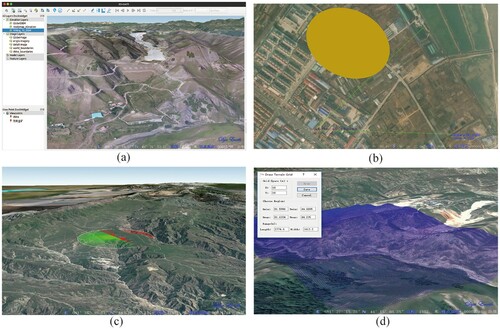
Figure 9. Typical simulated results are visualized in TDBSim. The result is rendered at (a) ; (b)
; (c)
; and (d)
A – location of rail network. B – location of small community. C – location of Parque da Cachoeira. D – location of Paraopeba river. The base map is the satellite image (Sentinel S2). The color map of the simulation results is mapped by velocity characteristics.

Figure 10. Field investigation photos of the A’xi tailings dam: (a) tailings in the A’xi tailings dam and (b) landforms downstream and environmental protection depot of the tailings dam.
